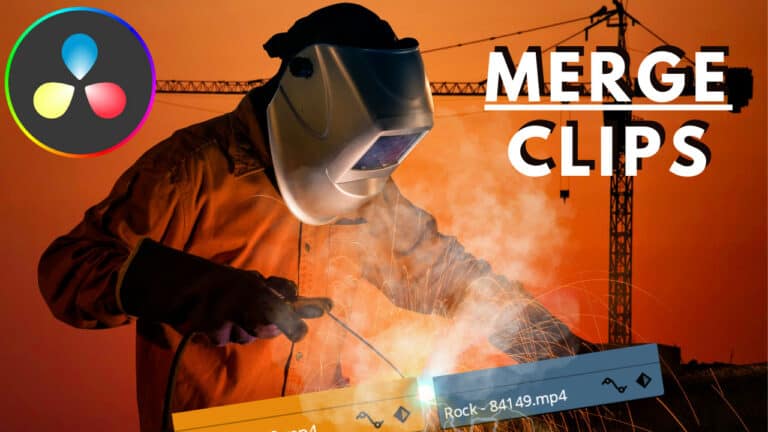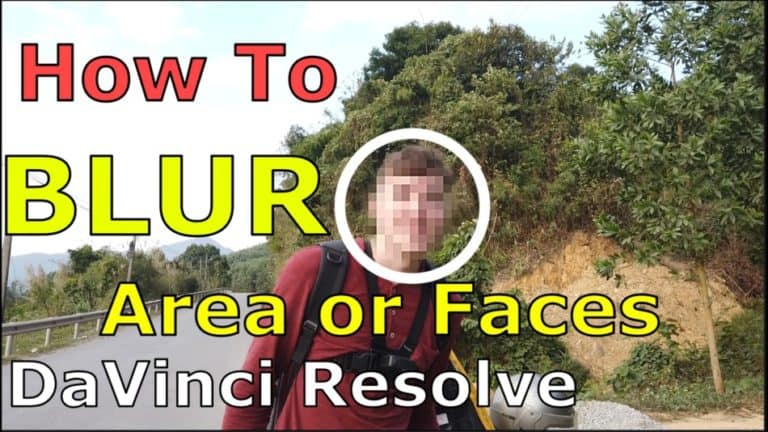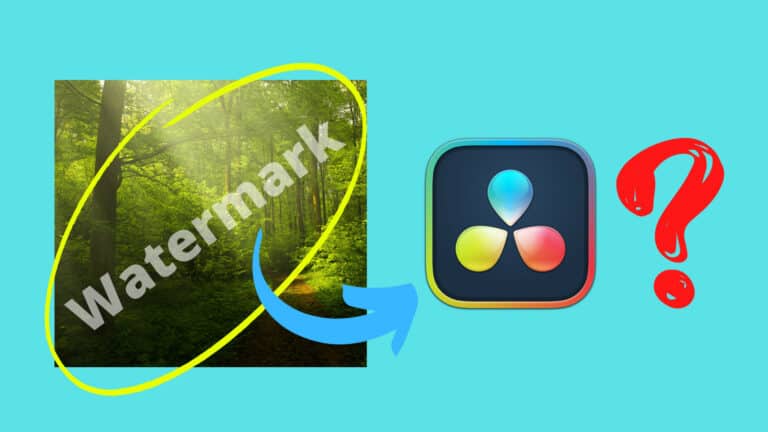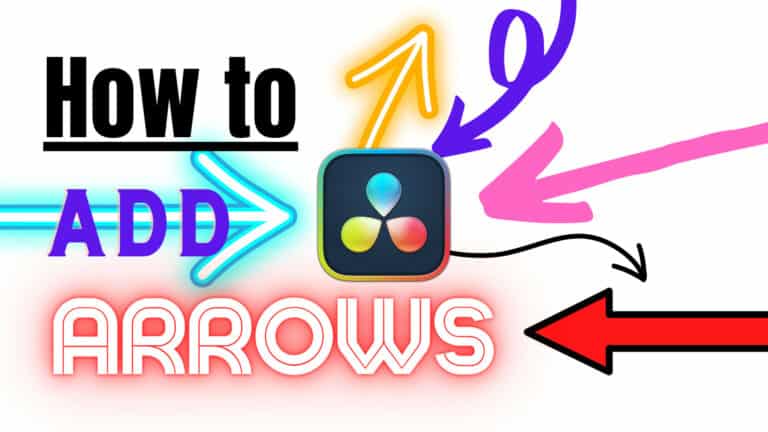How to Overlay Image in Davinci Resolve (+Helpful tips)
In this tutorial, I will show you how to overlay an image in Davinci Resolve.
Simply put we are going to add an image on top of a video!
- Open the “Media Pool” on the “Edit” page of Resolve.
- Add the video clip to the timeline.
- Add the overlay image to the timeline one track above the video.
- Click on the image in the timeline to select it.
- Open the “Inspector” tab, and go to the “Transform” options.
- Adjust the “Zoom” and “Position“.
To overlay an image in Davinci Resolve, simply add the image to the timeline, one video track above the video. Then, in the “Inspector” tab, adjust the “Zoom” and “Position” values, to adjust the size and position of the overlay image.
Here’s a more detailed description including pictures:
(You’ll also learn how to animate movement and change the shape of the overlay image)
Detailed Explanation:
First, make sure to be on the “Edit” page:

Open the “Media Pool” in the left-hand top corner.
Then locate the files you are going to use for your video on your computer.
To import them to Resolve, select the ones you want, and drag them into the gray area in the “Media Pool”, like in the picture below.
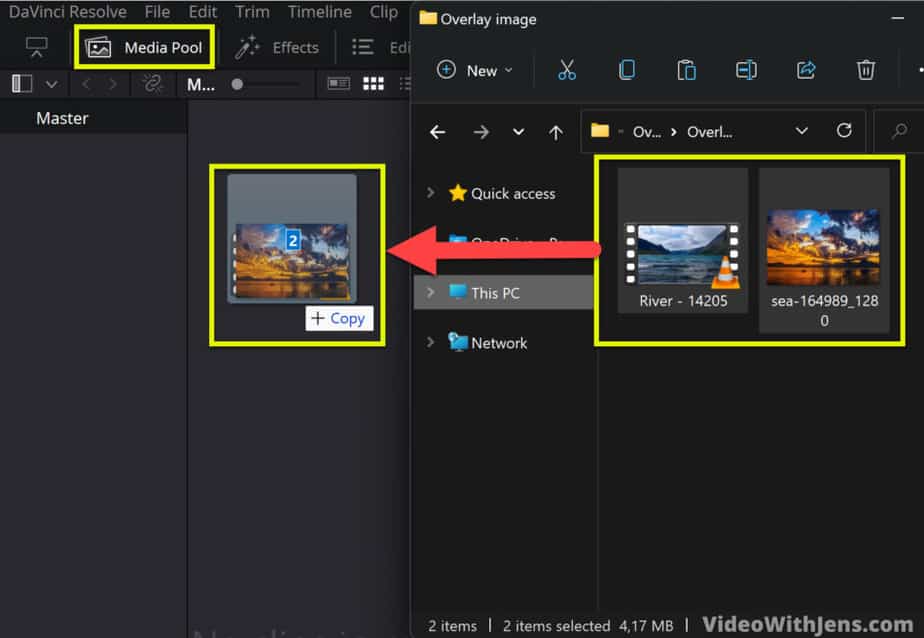
If these are the first files you are importing, you’ll get the question of if you want the project to match the frame rate of the clips you’re importing.
Click “Change” if all your files are the same framerate, otherwise, the best thing is to set the frame rate manually!
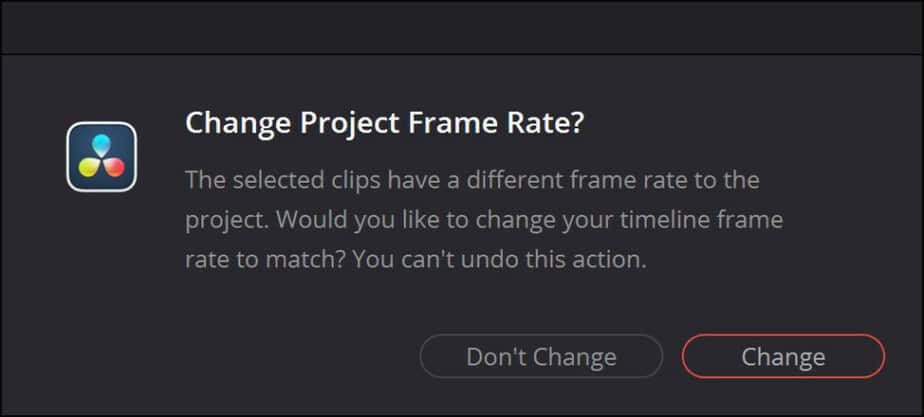
Add the clips to the timeline by dragging them from the “Media Pool” and dropping them in the timeline like in the picture.
In this case, you want to add the video first!
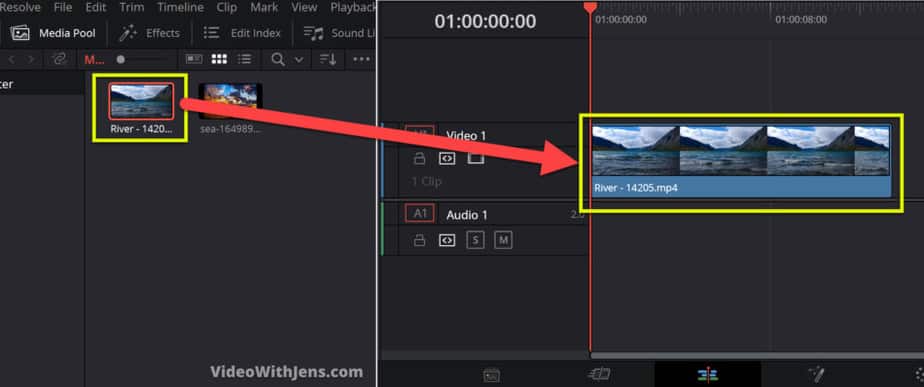
Then you want to add the image to the timeline one track above the video.
If you drag the image above the other clip you’ll see it’s generated a “Video 2“, drop the image here, like in the picture.
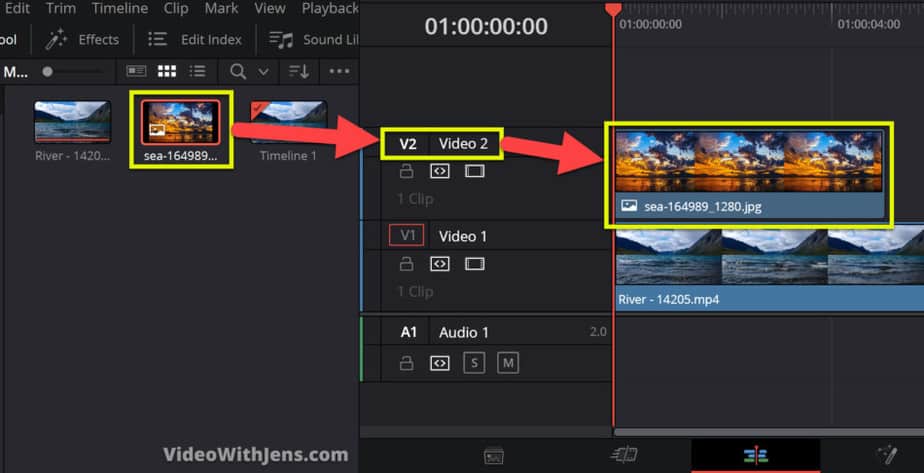
Then you’ll see the image in the video preview, partially or fully covering up the video, depending on its size.
Therefore, the next step is to adjust its size and position of it. To do this you first have to select the image in the timeline, by clicking on it. When it’s selected you’ll see this red border around it:
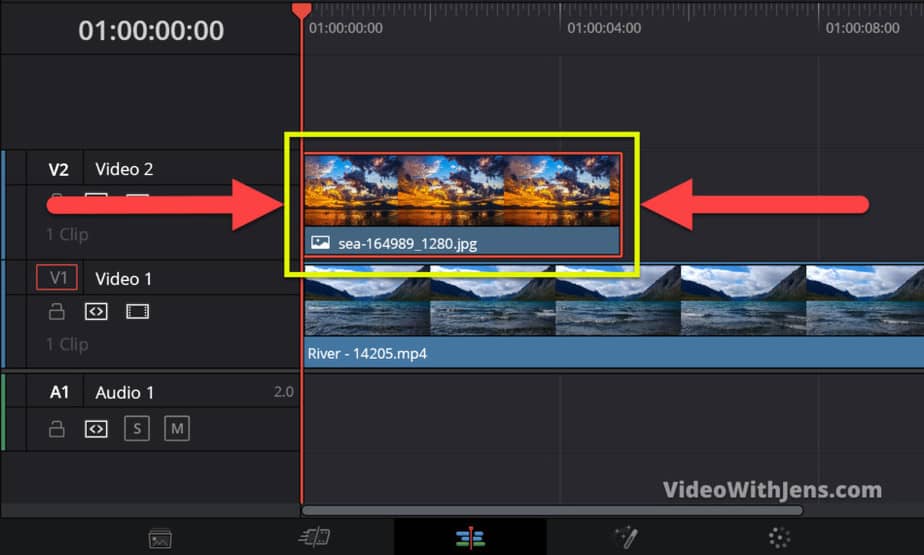
With the image selected, head over to the “Inspector” tab (located in the right-hand top corner).
Then inside the “Inspector” make sure to be under “Video” and then “Transform“.
Under “Transform” you can see the “Zoom” and the “Position“.
- Zoom change size.
- Make sure the chain/link icon is enabled, to affect width and height at the same time.
- Position change the position of the image on top of the video.
- X value changes its position horizontally.
- Y value changes its position vertically.
To adjust the value, simply hover over the number, click, hold and drag to either side to increase or decrease the value:
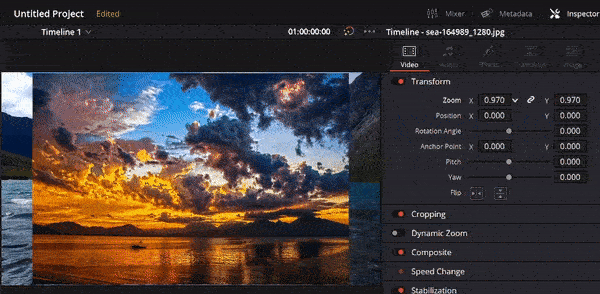
A little further down the “Inspector“, you can see a tab called “Cropping“.
Click on the name “Cropping” to open the tab.
Here you can crop the image in all directions, by dragging on the grey dot to adjust the crop value.
You can also change the “Softness” which makes the edges of the image smooth:

Further down, you also have a tab called “Composite“.
Inside this tab you can change the image’s “Opacity“, simply drag on the grey dot to adjust the opacity.
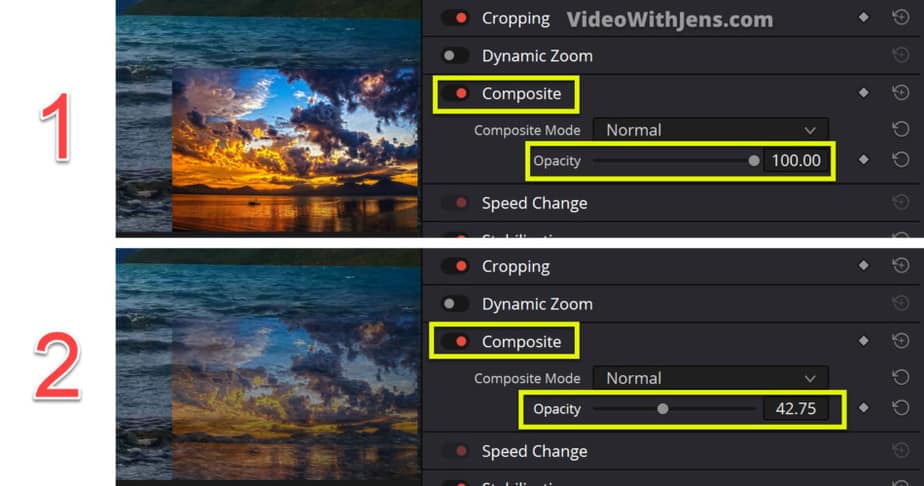
Here’s a video where I show you how to animate movement to the image overlay:
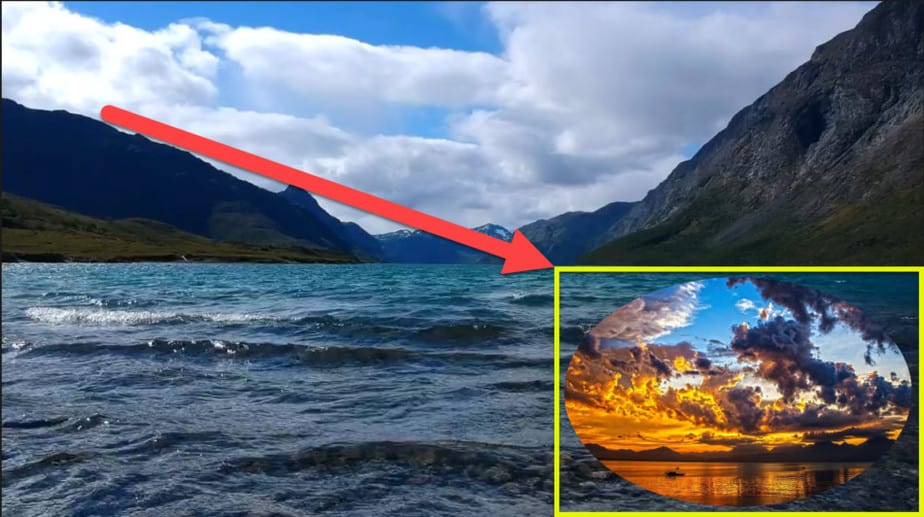
You can also make the image overlay in different shapes, like the circle I’ve made above.
And don’t worry, this is actually really easy. You can literally do it in 6 clicks! (I just counted…)
If you don’t take my word for it, you can count yourself.
This is what I want to show you next!
Making the Image Overlay Circular:
In this example, I’m going to continue from where I left off above! The image is still placed in the right-hand corner as in the picture below:
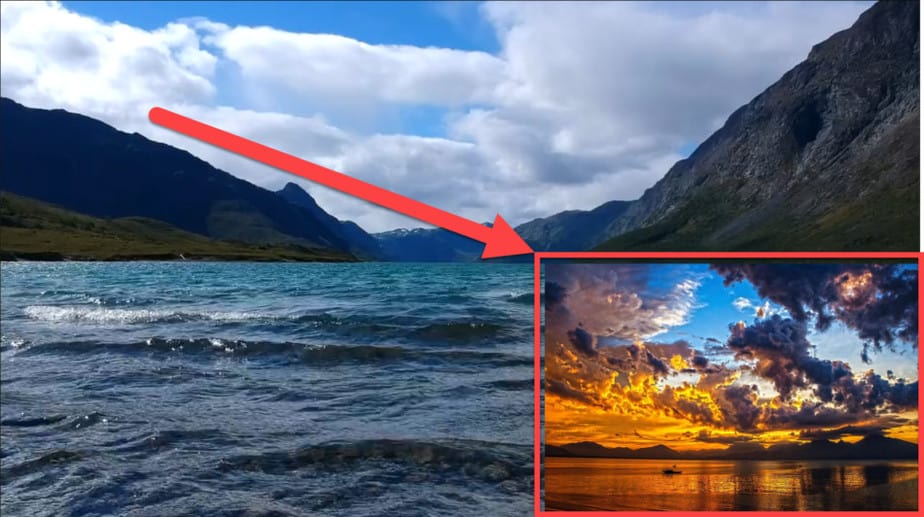
Then the first click is going to be used to open the “Color” page:

Go to the node graph under “Nodes“, located in the right-hand top corner. This one is open by default, meaning you should not have to spend a click on this one!
Right-click the background of the node graph (the gray part where the node called “01” is placed). Then click on “Add Alpha Output” (Watch the image below).
That’s 3 clicks.
Notice on the right side of the node called “01“, that there is a small blue square.
Click on the square, hold and drag it over to the “Alpha Output” and drop it. When they are connected you get a dashed line between them. Watch the image above for reference.
That’s 4 clicks btw.
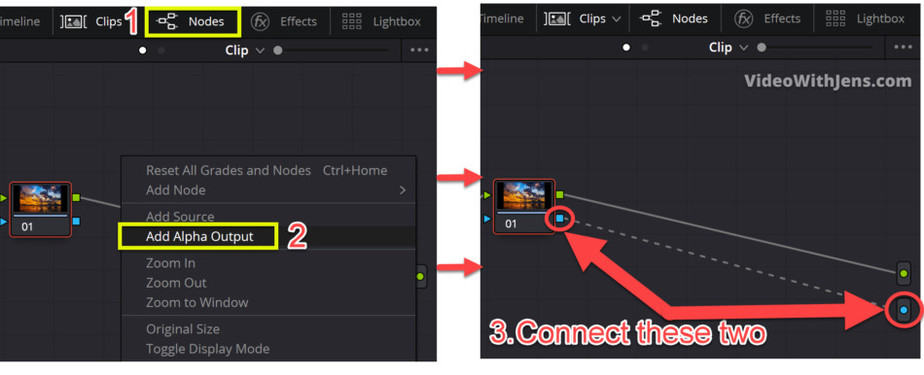
Now, in the toolbar/bar full of tabs in the lower third of the “Color” page, there is one that’s called “Window“. Hover your mouse over the different icons of the tabs to see their name. A more simple way is to just find the tab that looks like the image below…
When you find it, click on it to open it.
That’s 5 clicks.
Inside the “Window” tab you can see some different shapes and such… Here you want to click on the circle. Once you’ve done that it should appear on top of your video in the viewer/preview.
That’s 6 clicks! And in theory, all the clicks you need.
Thank you.
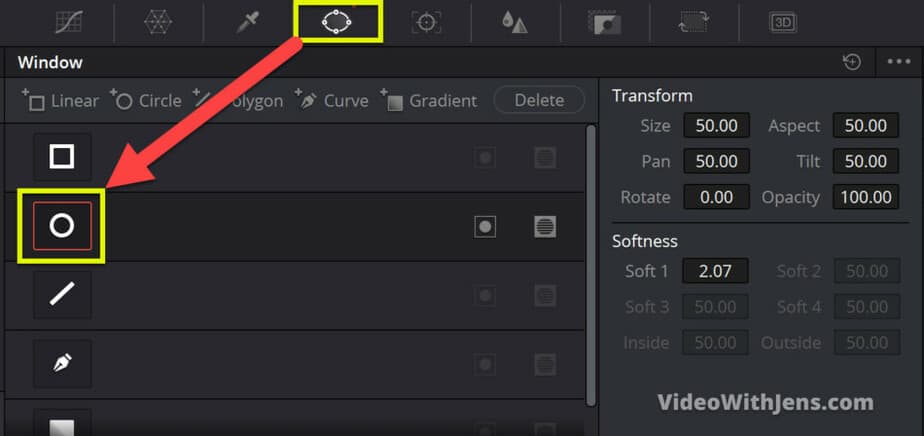
However, if you wish to adjust the size and position of the circle, that does not count.
The image below is an illustration of what the different dots on the circle do:
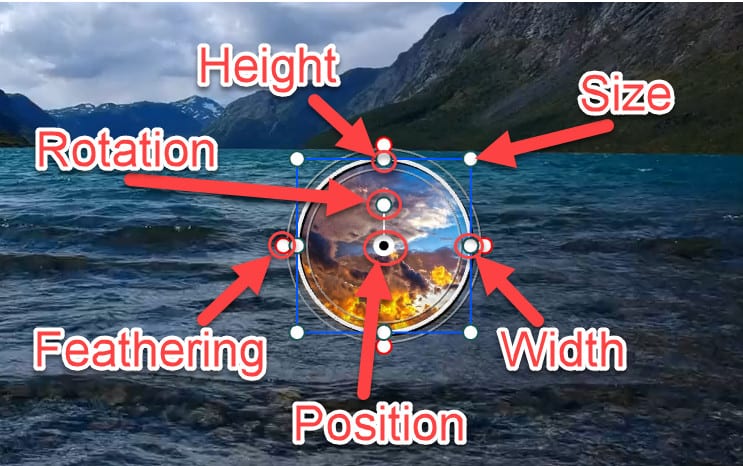
Watch the illustration below, to see how I used them:
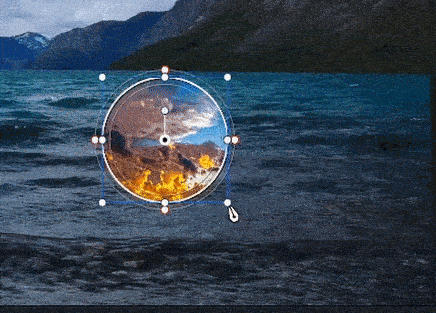
How to Make an Image Transparent?
- Go to the “Color” tab inside Resolve.
- Right-click on the node graph and click on “Add Alpha Output“.
- Connect the node to the alpha output.
- Open the “Qualifier” tab, and click on the “Picker” tool.
- Click on the background you want to make transparent.
Fix Black Screen With Overlay Image/Video in Davinci Resolve
To fix the black layer that appears behind your overlay go to the “Fusion” page inside Davinci Resolve. In the node graph simply move the node called “MediaIn” a little. This should fix your black screen if it’s caused by a bug with the alpha channel.
How to Add a PNG in DaVinci Resolve
- Go to the “Edit” page inside Resolve.
- Open the “Media Pool“, in the left-hand top corner.
- Import the PNG to Resolve, by dragging the file into the “Media Pool“.
- Drag the PNG from the “Media Pool” and drop it in the timeline.
To add a PNG to Davinci Resolve, first, locate where it’s saved on the computer. Then open the “Media Pool” inside the “Edit” page of Resolve. Next, drag and drop the PNG in the “Media Pool”. To add the PNG to your timeline, simply drag it from the “Media Pool” and drop it in the timeline.
That’s it for this tutorial! If you want to know how to adjust the luminance (brightness) like a pro, check out this article.
Best regards,
Your friend, Jens.


